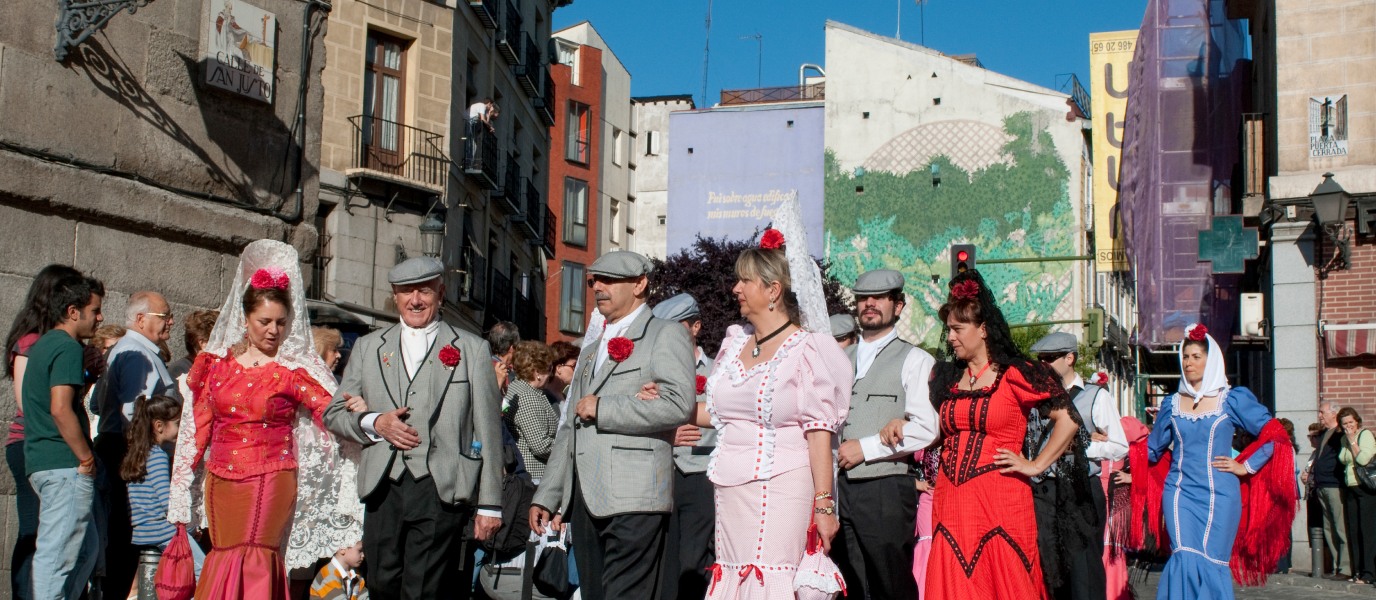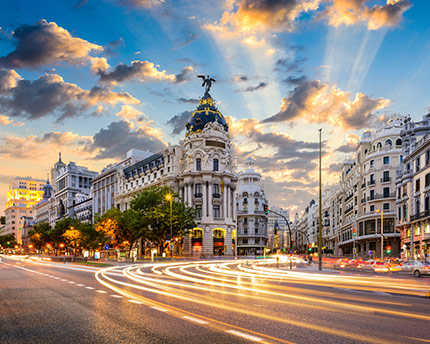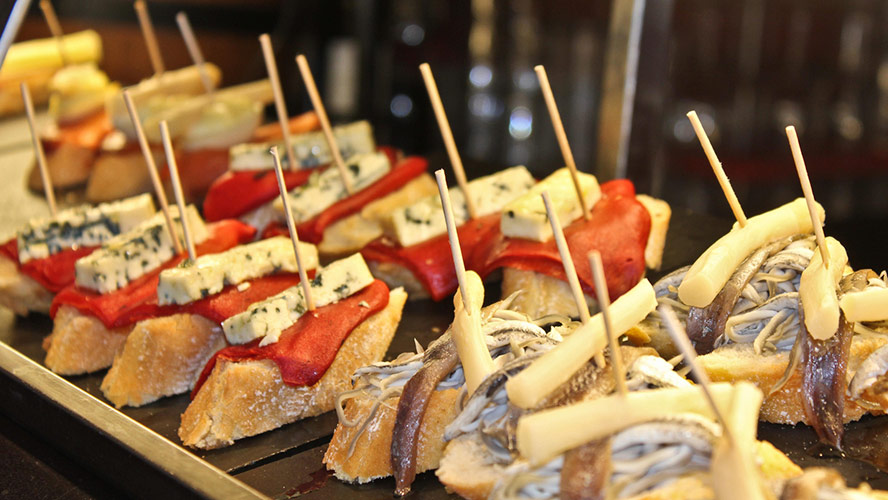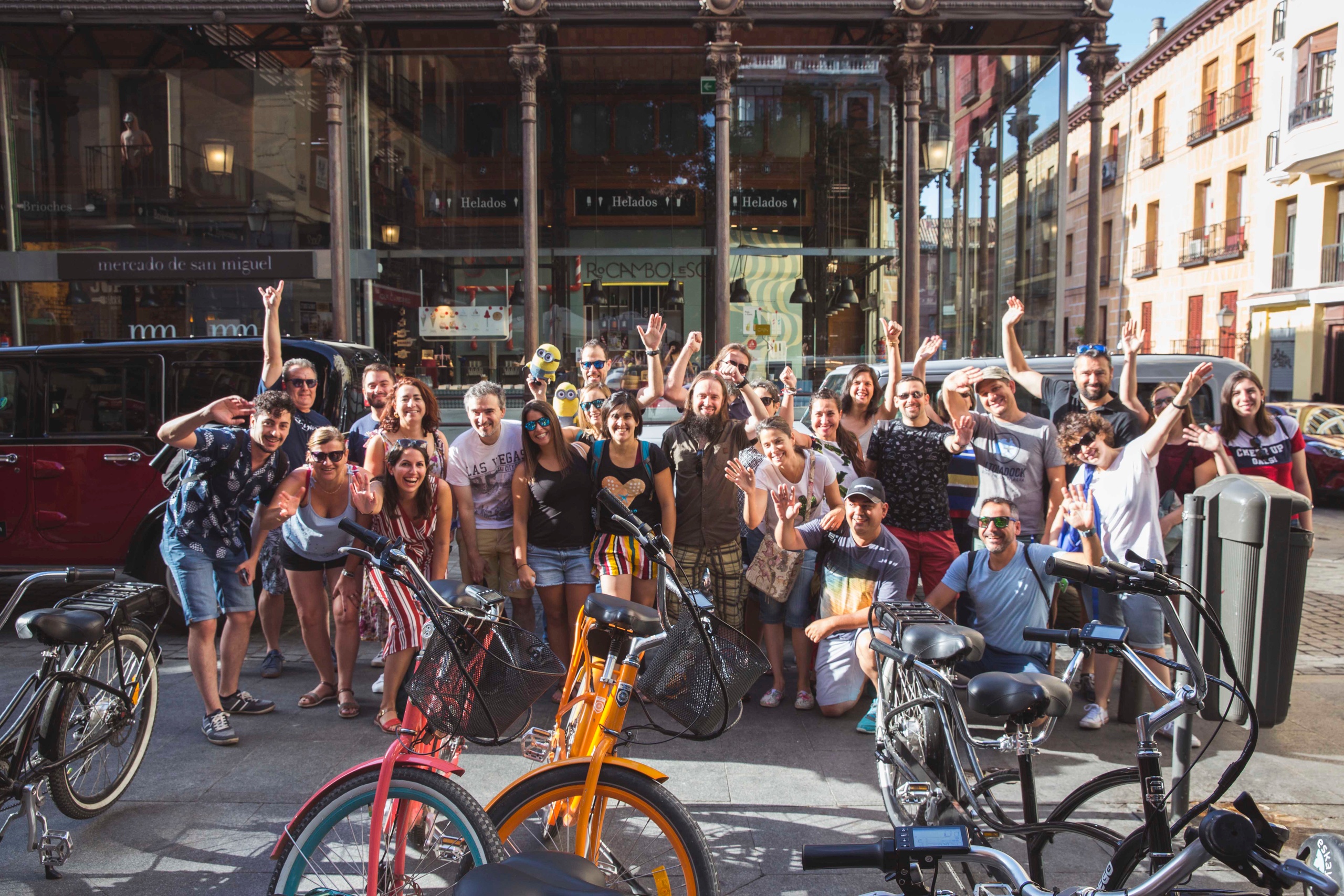Each 11 August, with the start of the La Paloma Festival, the narrow and meandering streets of the La Latina district transform into a colourful scene in which the sounds of chotis—the traditional music and dance of Madrid—combine with a selection of the area’s most traditional delicacies. The epicentre of this great ode to joy is the Church of the Parish of San Pedro el Real—commonly known as the Church of La Paloma—a place of worship that has housed, since the twentieth century, the famous portrait of the namesake virgin, for whom local people continue to feel powerful devotion. Although not the official patron saint of the city, the Virgin of La Paloma has traditionally been considered “the popular patron saint of Madrid”, which is why the street party in her honour is the biggest of the three summer festivals, together with that of San Cayetano (1 to 7 August) and San Lorenzo (8 to 11 August). Traditional dress, dancing and concerts, jugs of lemonade and slices of potato tortilla, lanterns strewn over doorways and bunches of flowers on the fronts of buildings… All this and more occurs in the very heart of Madrid across four must-see days.
The birth of the Virgin of La Paloma
On an ordinary day in 1787, a La Latina resident called Isabel Tintero saw how, on a plot of land adjoining her street—Calle de La Paloma—some children were playing with what seemed to be an oil painting of Our Lady of Solitude. As soon as she realised, she took it away, framing it and keeping it in her house, before later displaying it in the entrance way of her home lit by some lanterns. Although such phenomena was not uncommon at the time, the aforementioned image captured the attention of neighbours like no other had done before. Overnight, a series of miracles were attributed to the portrait of the virgin, whose official name would soon change to a more popular one: the Virgin of La Paloma (due to the street on which it was displayed). A whole legion of devotees began to flock to it, including, reputedly, none other than María Luisa de Parma—the wife of King Charles IV—who firmly believed that her son was healed thanks to the virgin.
Tintero’s home soon became too small for so many pilgrims and, as such, the painting was moved to a small chapel built on public land on the same street. During the Peninsular War of Spain in 1808 the chapel was looted and, as a result, Tintero herself was charged with hiding the painting for its duration. After a century of growing popularity, the painting was finally moved for definite in 1912, the year in which work was completed on the Church of the Parish of San Pedro el Real (Calle de la Paloma, 19) and the painting was placed above its altar.
The procession (or a different kind of walk through the heart of La Latina)
These days, the virgin continues to be the focus of attention, in spite of the extra festivities that have proliferated around it over the years. Each 15 August—coinciding with the day of the Assumption of Mary—the façade of the Church of La Paloma hosts a floral offering from local residents. This is accompanied by two masses: one in the morning, which is usually attended by the mayor, and one in the afternoon, during which a fire-fighter—the virgin is the patron saint of their profession—proceeds to take down the painting, which is then taken on a procession through the main streets and plazas of the neighbourhood.
The route in itself is a spectacle to behold. Among the crowds of spectators that escort the carriage—public figures included—are those decked out especially in Madrid’s traditional chulapo costume, competing to see who can complement the virgin in the most fun and original way.
Gran Vía de San Francisco, Puerta de Toledo, Calle de Toledo, Plaza de la Cebada, Puerta de Moros, Carrera de San Francisco, Calle de Calatrava and Calle de la Paloma are just some of the main spots through which the virgin is carried. Thanks to the procession you can appreciate some of the authentic decorative features on display, such as garlands made from Manila shawls, or the colourful images of the Virgin Mary that adorn doors and windows.
The more festive side of La Paloma
As we mentioned earlier, the La Paloma Festival has run alongside those of San Cayetano—in the Rastro/Embajadores area—and those of San Lorenzo—in the Lavapiés area—since the end of the twentieth century, together forming a veritable trio of summer festivals. If the procession on 15 August represents the event’s more religious side, from the 11 August onwards, a series of entertaining activities recalls the festival’s more popular history. We are of course referring to the classic pétanque, chess, frog (a classic disc throwing game) and mus (a Basque card game) tournaments; the chotis, paso doble and shawl competitions; and the election of best female and male traditional costume (both for adults and kids).
Food is another great mainstay of the event, without which La Paloma wouldn’t be the same. Classic drinks such as sangria and lemonade are the perfect accompaniment to a portion of patatas bravas (fried potatoes with a spicy sauce), some grilled sardines or a good slice of Spanish tortilla. Offal is an important part of the food on offer at the event too: gallinejas (fried chicken innards) and entresijos (fried lamb intestine) are served at the many bars and stands, always accompanied by a generous serving of chips.
The La Paloma Festival also boasts an extensive programme of open-air music concerts with a range of different performances, from traditional flamenco to the indie group of the moment. Another firm fixture are the bars that many establishments take out onto the street until the early hours of the morning. Graffiti Music Bar (Calle Bailén, 39), with its alternative decoration, Bar Marathon (Calle Calatrava, 26), which serves delicious patatas revolconas (mashed potato cooked with pork), and Sixta (Calle de Calatrava, 15), which caters to a mostly gay clientele, are just a few pointers for starting your evening/night at La Paloma.
























































































